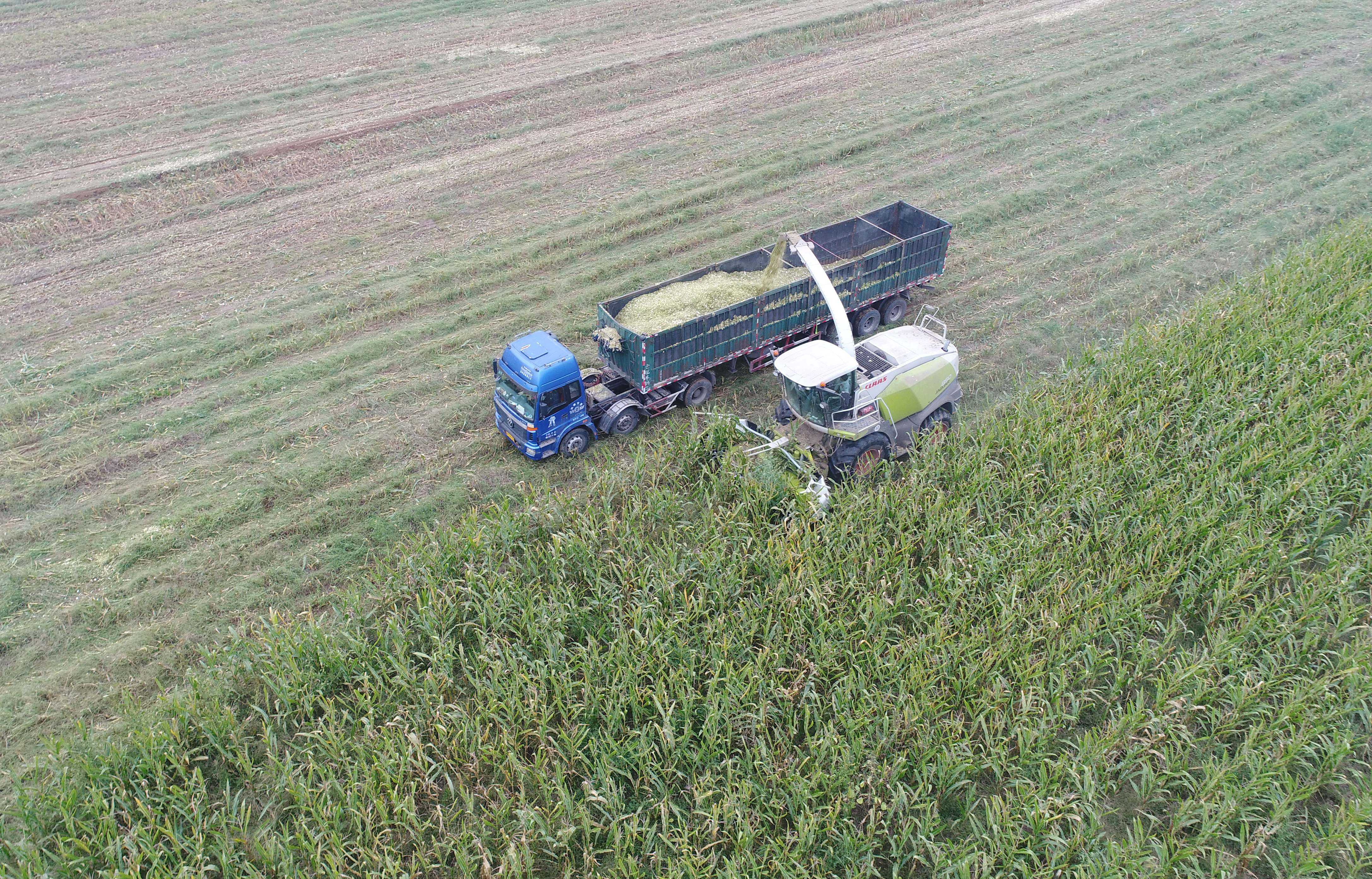
File photo shows farmers harvest corn crops to produce silage. (Xinhua/Zhu Xudong)
On the terrace fields of Anding, a northwestern China district once defined by UN experts as "uninhabitable" in the 1980s, farmers are busy harvesting burclover and corn silage, known as ideal forage plants for livestock.
Located in the gully area of the Loess Plateau, Anding District of Dingxi City is one of the driest and least developed areas of western China. Traditional agricultural crops like grain can barely produce a proper harvest due to the fragile ecosystem and barren land. But now, local farmers find their fortune by growing pasture.
Beginning in 2012, the local government introduced a herbage company and mobilized farmers to sign contracts with the company, entrusting farmers to grow forage plants by offering pasture seeds and cropping techniques for free.
Zhang Bing, 53, is one of those farmers who signed contracts with the Gansu Minxiang Forage Co., Ltd. Now he earns over 70,000 yuan (about 9,857 U.S. dollars) annually by growing 3.3 hectares of corn silage and 1.2 hectares of potatoes, compared to 30,000 yuan in the past.
"Forage plants that the company purchased from the farmers are not only sold to China's pastoral areas in Qinghai and Gansu provinces to ease the local fodder shortage, but are also chosen as the designated feed for racing horses of the Hong Kong Jockey Club," said Lin Yimin, who heads the company.
Zhang was rewarded with a rice-cooker as he sold the second-largest harvest to the company in 2018.
He applied for a loan of 40,000 yuan last year to buy a loader to improve the harvesting efficiency of the forage.
"In the autumn harvesting this year, farmers are queuing up every day at the purchasing station of the company to sell their harvest of grass," he said.
Today in Dingxi, there are 306,666.7 hectares of planted pasture, with an annual yield of fresh forage surpassing 10 million tonnes.
The high yield of pasture helps cultivate the local livestock industry, and rehabilitate the ecological environment.
The extremely barren land long listed as one of China's poorest regions has been transformed by a series of government-sponsored programs from guiding farmers to grow potatoes, an ideal crop for rainless, impoverished rural parts of western China, to solving food problems and developing forage and straw growing to increase farmers' income.
By the end of 2018, the added value of local grassland agriculture has reached 3 billion yuan and annual income per capita of farmers reached 2,300 yuan, according to Tang Xiaoming, secretary of the Communist Party of Dingxi Municipal Committee.

